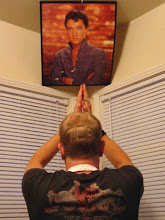
I've done this twice:
Mt. Clark, Northwest Ridge
22 Jun 1997 - Steve Shields (view Who's Who entry)
Peaks: Mt Clark
(sorted/filed as Clark)
Place: California
Unable to shake our tattered climber image, we were stopped several times for advice on how to approach "Snake Dike", the classic 5.7 line up the west side of Half Dome. Each time they asked if we were "headed up," assuming Half Dome. When we responding, "Mt Clark", they looked at us quizzically and said, "Uh, where's that?" We responded in a vague direction pointing "that way". Better left unsaid. We smiled, headed on our way and quickly lost the crowds.
A scenic hike along the rushing waters of the Merced River led through a majestic canyon of near vertical granite domes. We followed the well established trail for 6 miles or so after leaving the Half Dome seeking crowds behind at Little Yosemite Valley. Departing from the trail at its high point on the south side of the Merced River just past Bunnell Point, we headed up the first of three steep drainages leading southeast to Mt. Clark. The guidebook recommends following the second, or middle, drainage up through Clark Canyon; however, John returned this way and recommends our original deviation up the first drainage as a "much cleaner and easier" approach. The bridge between the first and second drainage (located near the northern bend) was completely washed away this winter. This makes our recommendation even more enticing, because it totally circumvents the need to cross the bridge. Not to mention being shorter!
For those of you interested in approaching this way, stay in the drainage and follow easy, but steep, hiking up boulders and scree through the old growth pine trees. If you deviate too much you will end up in "bush whacking hell". The drainage eventually eases off after 1,000 feet of elevation gain. Keep following the drainage up through the forest until it ends in a beautiful lake at a break in the broad toe of the NW Ridge of Mt. Clark. Excellent camping may be found here. You may gain the ridge directly above (southeast) the lake or traverse eastward then southward into Clark Canyon.
We stopped a bit early and camped at 10k in Clark Canyon for the night after John started feeling ill due to altitude and overall fatigue. He had given it a good run-for-the-money, but was generally not in shape for such a demanding hike. About 6K feet and 15 miles.
From our vantage point, Mt. Clark rose like an impenetrable medieval fortress guarded on it north flank (cirque) by sheer 1,000' walls of granite. The knife edge NW ridge curved around from the west like a treacherous staircase leading to the summit thrown. It's a striking peak well hidden from the usual traffic of Yosemite. From Northern Yosemite peaks, Mt. Clark can be easily identified by its unique pyramid shaped peak thrusting out of the surrounding terrain.
After a brisk night of sub freezing temperatures, we arose at dawn to get an early start. I had packed light, planning on testing a down jacket/bivy bag approach to lightweight bivouacking, but unfortunately did not plan on the freezing temperatures or spending the night at 10k'. I totaled about an hour of sleep that night. Most of it in front of a fire I had to continually stoke to stay warm. Live and learn. John promptly decided to head back down after sizing up the peak and his present condition. We discussed splitting up and decided that it would be ok. He would head down Clark Canyon and I would head up and then descend down the western slopes to complete a round trip. The ridge looked dicey, but hey, the "guide" said 4th class! I'll give it a go. I kicked in the thin sheet of ice that had frozen over the local water supply, a deep puddle in a nearby granite slab, and pumped up my bottle to full.
After gaining the ridge via a steep rocky chute, I followed the contour of the ridge on class 2 terrain along side the eastern vertical drop-off. As the ridge snaked east (the ridge formed an "S"), it quickly became technical. The obvious line dropped below the ridge proper, which was well above 4th class and extremely exposed, and into the bushy scree and rocky slopes adjacent to the exposed ridge. Being solo, I chose this route and followed 2 day old boot tracks up the ridge toward the summit. I couldn't tell if the standard NW Ridge route was suppose to follow the apex of the ridge, but it appeared like way too much 5th class climbing to be the standard 4th class route.
Easy ground ended abruptly at a steep snow field, which was now solid ice. The snow/ice field appeared to block the easiest ground, leaving me with a limited range of options. I made 4 different attempts at free climbing the ridge proper in my Nike Lava Domes, but maxed out into 5.6/5.7 slabby sections each time about 60 feet up. This just wasn't 4th class climbing, even by the old rules! And there was no sign of any climbing activity. I could see the summit a couple hundred yards away, enticing me. I could push through the moderate to easy 5th class, but down climbing would have been another story. The risk-benefit ratio wasn't worth it. It just didn't feel right. I bailed.
In my obsessive determination though, I sighted one more line of weakness on the other side (south) of the ice field up a spur in the ridge. This would be my last try. I dropped my pack and started up. Pulling through a short section of vertical rock on very positive holds I spotted a rappel sling in my path. Right on! I continued up reaching 4th class scrambling until it again quickly approached 80 degrees on semi-featured granite. Climbing past more rappel slings, I followed up one of many crack/flake systems to gain the final 5 foot wide knife-blade ridge leading to the summit block and register. There, I found a fantastically exposed summit delivering expansive views of the Yosemite High country and the many crests surrounding the area: Cathedral Peak, Cockscomb, Unicorn, Echo Peaks, Tuolumne Peak, Lyle, Electra, the Minarets, Ritter/Banner, Conness and of course Gray and Red peak directly to the south.
I retraced my steps down climbing and continued descending the western slopes of Mt. Clark on granite slabs and scree through the serene mixed pine forests. Roughly 6 miles of cross country travel, leading through a couple thick bogs and fire damaged/log strewn sections in the low lands brought me to the Merced Pass trail along Illilouette Creek. Ten more miles of trial walking along Mt. Starr King and its sister domes led me down to Nevada Falls and back to the world of international tourism. I jogged down the pack trail to find John waiting patiently at the truck. He completed his journey by wandering upon a granddaddy black bear a mile upstream from Little Yosemite Campground.
Definitely a recommended trip
1 day hump, 1 1/2 days fast, 3 days at a relaxing pace
Bring a rope if you're uncomfortable scrambling hard 4th, maybe easy 5th class rock










No comments:
Post a Comment